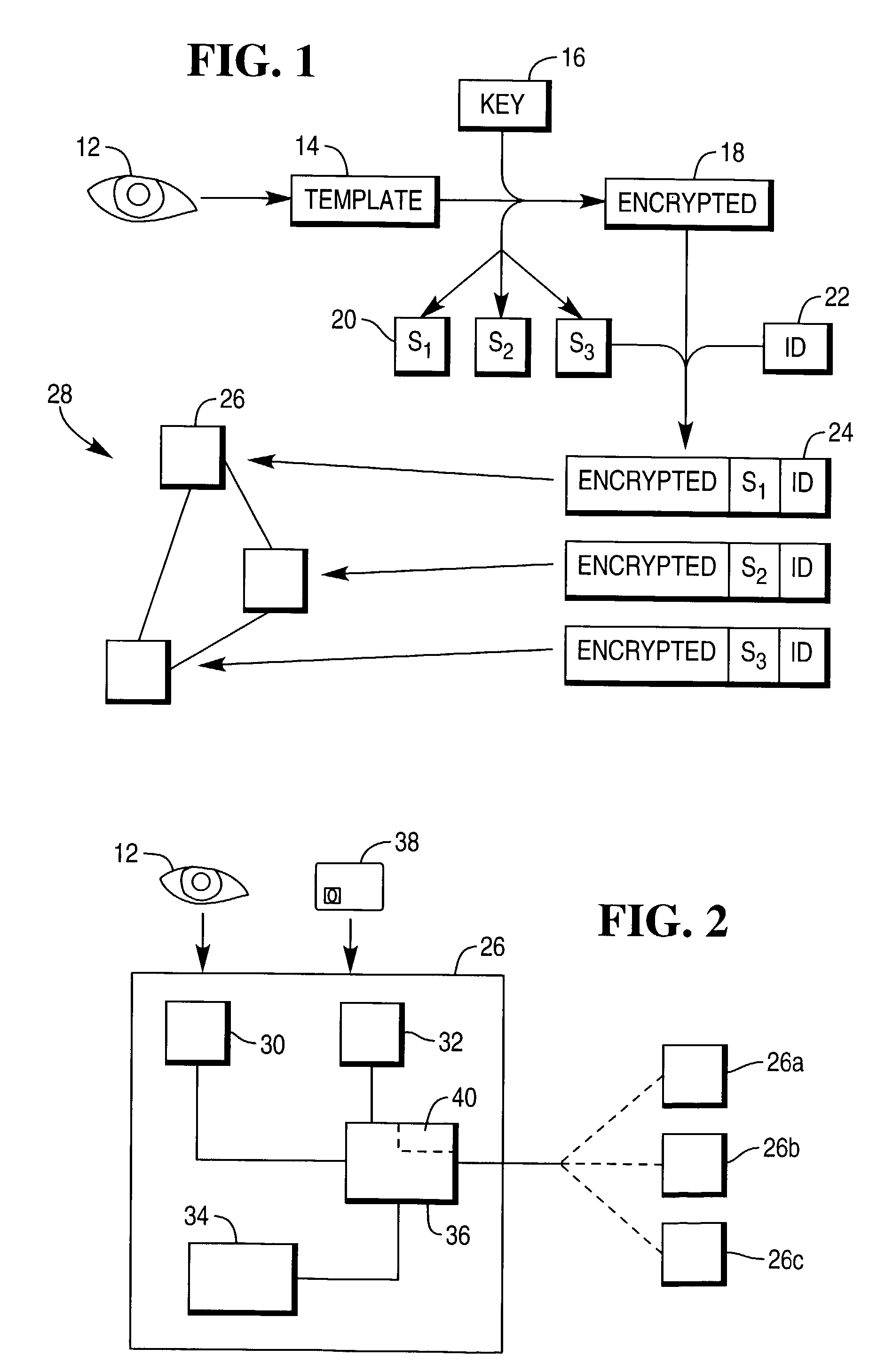Biometrics template
a biometric and template technology, applied in the field of biometric templates, can solve the problem that the authorized user's biometric data cannot be duplicated by the third party, and achieve the effect of reducing the risk of the template becoming compromised, ensuring the security of the system, and reducing the tim
- Summary
- Abstract
- Description
- Claims
- Application Information
AI Technical Summary
Benefits of technology
Problems solved by technology
Method used
Image
Examples
Embodiment Construction
[0038]Referring first of all to FIG. 1, this illustrates schematically a method of storing a biometrics template on a network in accordance with one embodiment of the present invention.
[0039]A user wishing to be registered on the network first of all presents their eye 12 to a biometrics scanning station, where the eye 12 is scanned, and a digitized image converted into a biometrics template 14. The generation of a biometrics template from the eye is wellknown, and need not be described further here. It will be appreciated that the biometrics template need not be derived from the eye, but may come from any other suitable part of the body.
[0040]The template 14 is then combined with a cryptographic key 16, by means of any suitable encryption algorithm, to generate an encrypted template 18. Meanwhile, the key 16 is divided into a number of key shares 20, the precise number of shares and algorithm used depending on the needs of the network operator. A unique identification code 22 is al...
PUM
 Login to View More
Login to View More Abstract
Description
Claims
Application Information
 Login to View More
Login to View More - R&D
- Intellectual Property
- Life Sciences
- Materials
- Tech Scout
- Unparalleled Data Quality
- Higher Quality Content
- 60% Fewer Hallucinations
Browse by: Latest US Patents, China's latest patents, Technical Efficacy Thesaurus, Application Domain, Technology Topic, Popular Technical Reports.
© 2025 PatSnap. All rights reserved.Legal|Privacy policy|Modern Slavery Act Transparency Statement|Sitemap|About US| Contact US: help@patsnap.com


